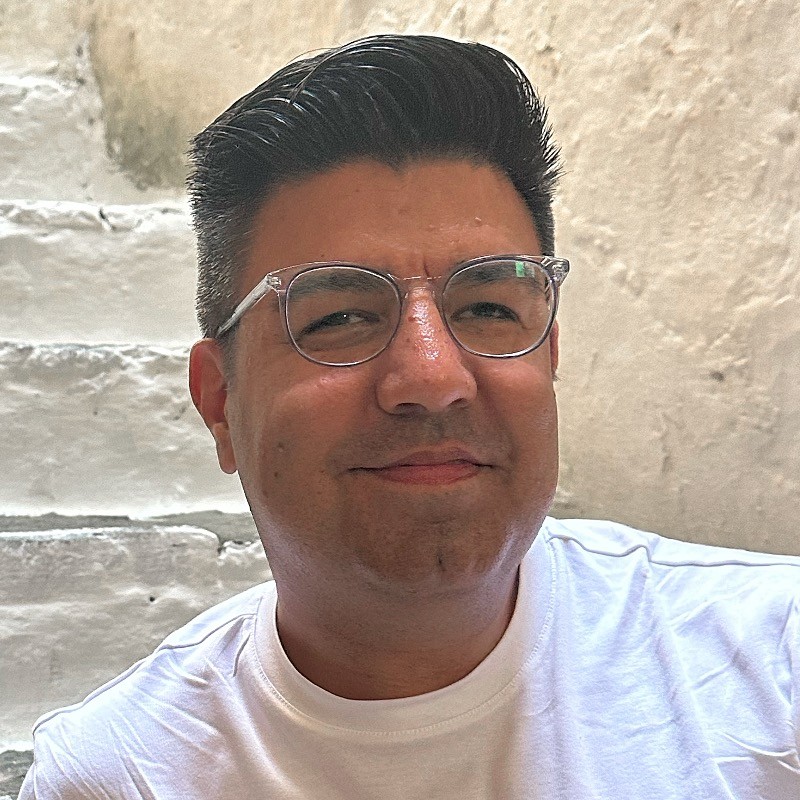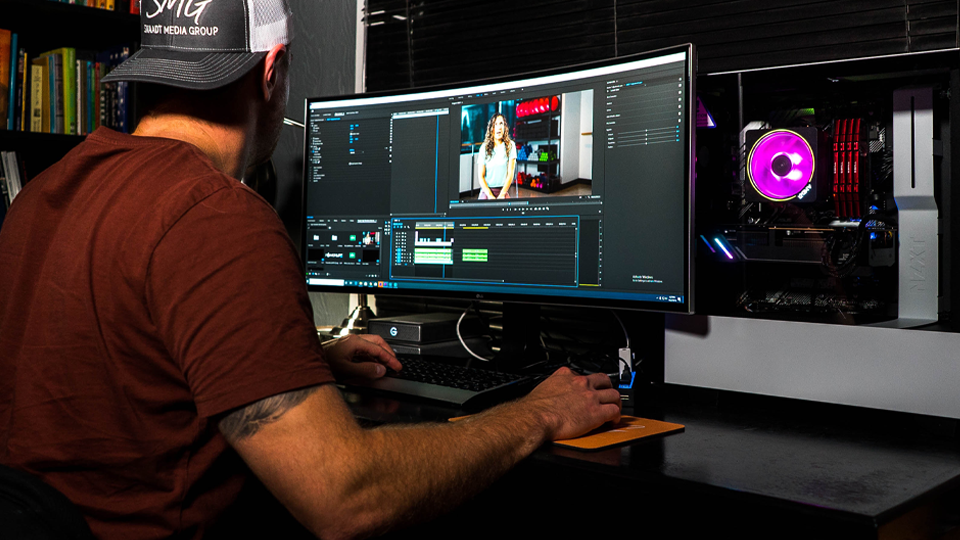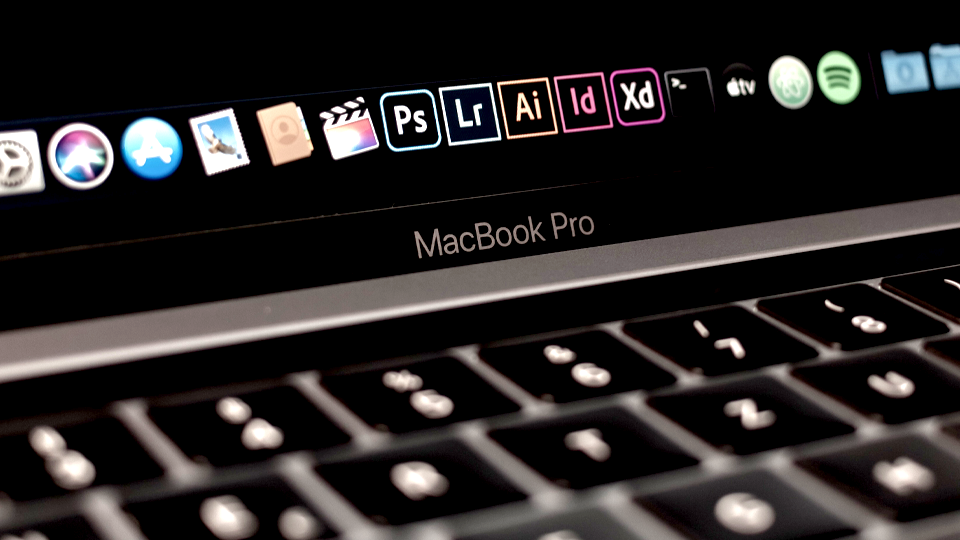Inside the Studio: Motion Designer & Educator Kyle Hamrick on how your creativity can make the world a better place
The Editors

10 Minutes

From edit bays to educational sessions, Kyle Hamrick’s career has flowed through nearly every aspect of the video production & motion design space. The Kansas City-based multimedia creative & educator has worked alongside some of the biggest brands in the business; his work has been featured on ABC, FOX, and numerous broadcasts for professional sports leagues; and he’s a longtime educator with the renowned digital platform, School of Motion.
Now, Hamrick balances the creation of educational & “edu-tainment” content for aspiring motion designers, and commercial motion design work as a freelancer. In this interview, Hamrick shares his insights on balancing creative work with personal fulfillment, the value of community, and how to leverage your skills to make a positive impact on the world as a creative person. Keep reading!
How’d you get started in animation?
At one of my first “real” post production jobs after college, we had a team of several editors making unexciting content. Occasionally, though, we’d get handed a bunch of green screen footage, and were asked to make something… I learned After Effects as part of that, and it just stuck. I loved being able to create new things, instead of only working with footage. I’ve retained that editor mindset, but it’s only in retrospect that you realize how much [your experience] influences the way you work.
What's the creative scene like in Kansas City?
There's a lot of agencies here, and a big design community. Hallmark has been based here for decades, so there's always been visual designers and illustrators. The motion design scene is a little more underground— but because of all the agency work there's a lot of video post production & adjacent creativity that happens. It's a sizable city, but it's not New York or Los Angeles. Being able to work remotely on anything, anywhere, is totally possible now—and I work with clients from all over.
What have you been working on recently?
I'm spending a lot of time talking about making stuff, but I definitely feel like I need to keep also making stuff. [Laughs] It’s all about finding the right balance of making stuff to make money, making stuff for yourself, and also providing yourself time to be “off” and live your life.
Big Slick was the project I worked on most recently; it’s is a celebrity charity event benefitting Mercy Children’s Hospital in Kansas City; we just raised almost four million dollars for children's cancer research this year alone. I cannot alone find a cure for cancer, but if I can use my skills making motion graphics to make this live event look better… that’s a win-win. It's a cool thing to to apply your skills to something that matters to you, and helps nourish your creativity.
Who are some of your favorite creatives to work alongside?
I love working with Visual Designers who also understand the world of motion design. With a time-based medium like animation, I prefer to work with someone else's plan; then I can focus on making [the animation] move, ensure the timing is perfect, and bring the idea to life, instead of trying to balance both the idea & the execution. It's fun to play off each other's strengths.
What topics are the most fun to teach?
I get really excited showing people workflow techniques; like showing someone where to check two boxes, and it saves them 30 clicks a day, or something like that. Folks have just dealt with the process being difficult [in various ways] and never imagined a different way of working.
What are some of the video editing tendencies you still rely upon?
First, video editing teaches you how to rely upon good workflows: Editors have to take all that footage & slim it down into something meaningful—which also means they need to keep track of all those files, file names, etc. It also has a huge impact on your sense of timing and pacing; people with a more “static” design background often don’t think about the aspect of time.
How does the role of animator fit into the creative process?
I always try to get myself involved as early as possible, even if I'm just doing a small piece, so that I understand the context. Everything should feel integrated or intentional. Other times, it can be just, “Hey, make some titles by this afternoon!”—but you still want to understand the bigger context.

What’s the best way to nurture a creative community?
Let yourself be open to opportunities when they arise; on the flip side, know when to say “no.” You’ll probably have to learn some of it the hard way while you figure out which opportunities are worth your time. Most of us just want to work with reliable people that aren't a pain in the ass…
As creatives, we also have superpowers to make things interesting. There are many causes in the world that need attention. Find something that's important to you, and even if it's for free, help that thing become more palatable to the average person by making it interesting.
I also encourage people to find an opportunity to teach. Go to a meetup and offer to do a 10-minute presentation on something you’re interested in. If you really want to learn something well, teach it! A lot of people know more than they give themselves credit for… and they should be confident about sharing that knowledge!
Do analog influences ever enter your digital-first workflow?
I take photographs & try to use real textures when possible. It can be as simple as like tearing up pieces of paper & scanning them so that you have your own torn edges, in the shapes that you want, without having to manipulate assets you found online. Having other analog creative pursuits can also be healthy & good… tangible things force you to make decisions. There’s no “undo” button.

For you, what’s the most magical part of the creative process?
Usually, when a project is done, you have that great cathartic moment. But that “magic moment” could also be at the beginning when you have all the cool ideas—before the client crushes them! [Laughs] I try to make sure that every project, even if it's something straightforward, has some little moment of joy in it, like using a new technique that I hadn't thought to try before…
You often collaborate remotely. What workflow hacks help you succeed from afar?
I am lucky, largely because of my location—I have gigabit ethernet Google Fiber… I gained one-day’s time as soon as it was installed. As a creative, anytime you can get the annoying, technical stuff out of your way, you can focus back on what you actually want to do. That’s a huge win...
Cloud storage solutions like Suite have also become more capable and more accessible, that's huge! You're not shipping drives back and forth anymore; you can use features like Team Projects in Premiere Pro; and you can literally work in the same project with the original media. Nothing is in your way, and you're not spending half a day figuring out a bunch of technical bullsh*t.
What are the traits of the best creatives?
Be curious. Be open to trying different techniques & mediums, especially ones that you're not going to be good at. Even if you're a “super expert” at something, it's good to be reminded what it feels like to start back at zero. Like I said, I'm a workflow and efficiency person, which people value highly.
Most people would take someone who is talented, gets their stuff done on-time, and is easy to work with, over the rock star who’s a pain in the ass. Be that first person, who communicates well and, basically, just does what you say you're gonna do. That's the person people want on their team...
Any final thoughts to Suite's creative community?
Do what you can, and use your skills to improve the world a little bit. Try to do something that matters to you. None of us get into this creative stuff to crank out boring ads for things we don't care about—find a way to make sure that you're like feeding yourself figuratively, as well as literally. [Laughs]
To read more stories about the Creative Process, click here.




































